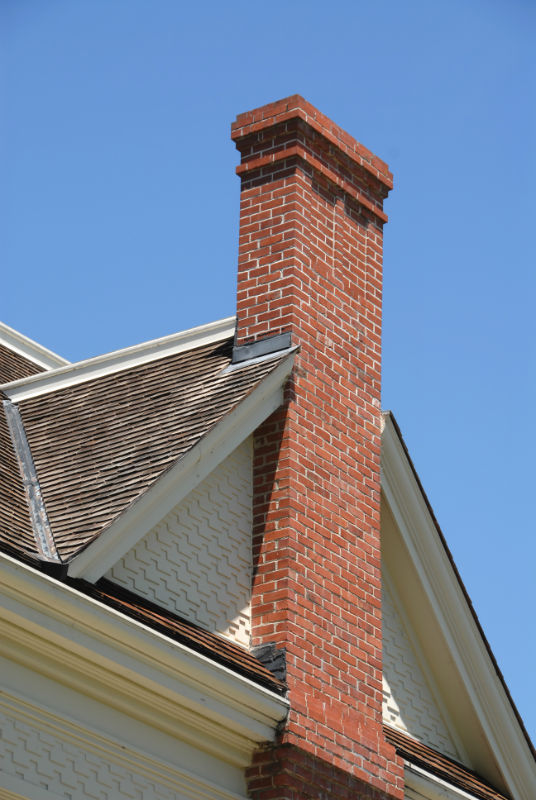The anatomy of a masonry chimney consists of many important parts, and each part has a job that is essential to the proper and safe operation of your fireplace and chimney system. Many homeowners are unfamiliar with these parts and their functions, and knowing the names of these parts and what they do can help you understand how your chimney works. As part of our duties as Chimney Safety Institute of America (CSIA)-certified chimney sweeps, we at Blue Ridge Chimney Services take pride in educating our customers about their fireplace and chimney systems. We would like to tell you the parts of a masonry chimney and explain what exactly they do to keep your fireplace working correctly and safely.
As identified by the CSIA, the following parts make up the anatomy of a masonry fireplace and chimney system:
MORTAR CROWN — Also known as a chimney crown, this part sits on top of the chimney to prevent water penetration of the bricks and mortar as well as water leaks down the flue and into your home. You can also top your mortar crown with a chimney cap for even more protection.
FLUE — The chamber that vents out the corrosive byproducts of combustion from your fireplace, you can find a flue in several different shapes and sizes. A single chimney can have multiple flues if several fireplaces or stoves are connected to the same chimney.
SMOKE CHAMBER — Located above the firebox and below the flue, the smoke chamber allows smoke to mix and rise up the flue. Most smoke chambers are made from terracotta tiles. Some people also call this part the chimney throat.
SMOKE SHELF — Working with the smoke chamber to push smoke out the flue, the smoke shelf is behind the damper and is the bottom of the chimney.
DAMPER — Usually located in the same area as the smoke chamber and smoke shelf, the damper seals your chimney shut when the fireplace is not in use. A very important part of your chimney, the damper needs to function properly to keep heated air from escaping out the chimney when there is no fire.
LINTEL — Embedded into the brick, the lintel is a heavy piece of angle iron that holds up the bricks over the center of the fireplace.
FIREBOX — An essential component of your fireplace and chimney system, the firebox is a two- or three-walled structure that contains the direct heat of the fire and guides the smoke into the smoke chamber. Because the firebox is repeatedly exposed to such high temperatures, this part tends to deteriorate more quickly than other parts of the anatomy of your chimney. It is crucial that the firebox is constructed with the right materials and kept in good repair.
ASH DUMP — Equipped with a door, the ash dump is located directly below the center of the firebox. When the ash dump door is open, ashes from the fire fall into the ash dump. This part of your chimney makes it simple to remove ashes from the firebox.
CLEAN OUT DOOR— Most often located in the basement of your home, the clean out door allows you to completely clean out the ash dump more easily.
Have questions about your chimney’s anatomy? Contact Blue Ridge Chimney Services to ask our staff whatever you need to know about the parts of your chimney.


